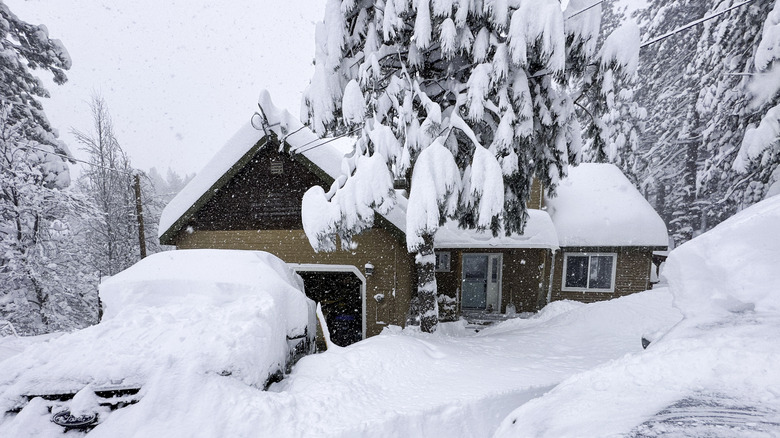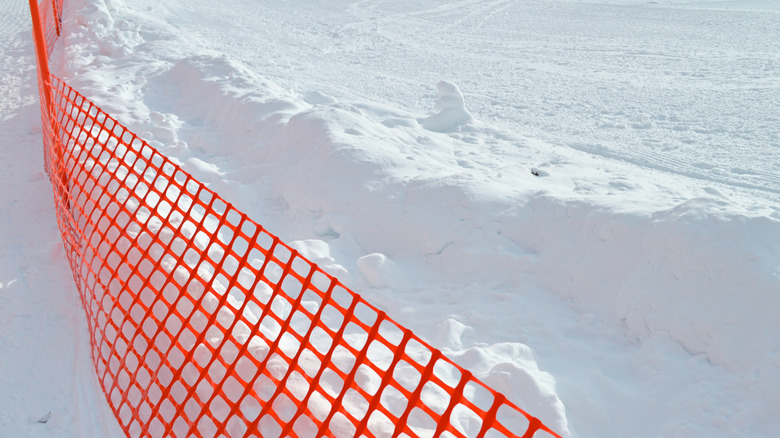What Is A Snow Fence And Do You Need One?
If you're a skier, you've probably noticed the plastic mesh fences which are often set up alongside the slope. These are temporary snow fences, designed to reduce wind speeds so snow drifts don't take over the slopes. They have openings because they're not meant to stop the snow entirely, just slow it down; breaking the wind causes much of the snow to fall behind the fencing. Those who receive heavy snow each year and get snowed in should consider adding either a temporary snow fence, a permanent one, or even a living snow fence to control drifts. People living in rural areas that don't regularly see snow plows, those who reside next to highways, people with long driveways, and homeowners with ponds or streams on property should consider adding a snow fence as well.
The temporary structures that you see on the slopes could be used on your property, but they aren't the only option. Those looking for the best hacks to handle the snow each winter might consider a more lasting solution. Permanent snow fences are typically constructed of wooden slats positioned horizontally or vertically, leaving about an 8 to 10-inch open space at the bottom, with posts constructed of treated wood or metal. The fencing material also only covers about half of the area, with the other half open, allowing air to flow through. Remember, the point is to disrupt the path of the wind, interrupting the snow's flow and causing it to gather on one side. While there are many reasons to install fences during the winter, if it's excessive snow you're dealing with, you'll want a fence specific to that purpose.
Choosing the right location for your snow fence
Once you have settled on the type of snow fence you want, it's important to know exactly where to place it. Think about the area you want to keep clear, and build your snow fencing upwind from that area at a distance of at least 35 times the height of the fence. When the snow falls and the wind blows through, the precipitation will mostly fall on the desired side to keep your space relatively clear of drifts. Local weather stations can provide meteorological data to help you determine wind direction.
If you're not thrilled with the look of the various snow fence designs, there's another option to consider that takes a bit more time to establish. You can use hedges to act as a snow barrier that works in much the same way as a standard snow fence. While the aesthetic upside and potential for wildlife habitat support might be obvious, the downside is that unless you're purchasing fully-grown hedges, it can take a long time to grow the plants to the desired heights and widths. However, the wait might be worth it, and you can always install a temporary snow fence in the meantime. The State University of New York College of Environmental Science and Forestry suggests a matrix of shrubs and trees for this purpose with a stem density of about 40% to 60% and maturity height minimums of 8 feet. To get more out of your living snow fence, think about adding native shrubs that can become a safe haven for birds and trees that produce fruit for you and your family.

